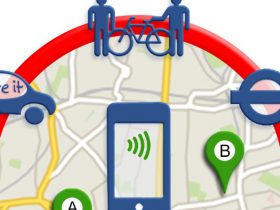While 2020 was a successful year for Artificial Intelligence (AI), specifically the subfields of Machine Learning (ML) that are Deep Learning and Reinforcement Learning, there is one industry that is on the cusp of mass market adoption and that is autonomous vehicles.
While Tesla’s autopilot was first introduced in September 2014, it still does not qualify for full level 5 autonomous driving. Level 5 is defined as Full Driving Automation. Level 4 is defined as High Driving Automation, and the current version of Tesla autopilot would best be defined as Level 3 Conditional Driving Automation. This still requires the human to be alert to take control of the vehicle.
2020 Milestones
2020 was a hugely positive year for autonomous vehicles, since October 2020 Waymo has been enabling customers to hail driverless vehicles using a service called WAYMO ONE, and the feedback from riders has been overwhelmingly positive. There have been no reported incidents of dangerous driving, or even of strange errors. To be specific WAYMO ONE is full level 5 autonomous driving. This service enables anyone in Metro Pheonix to download the Waymo App and hail a ride. This is no different than riding in an Uber or Lyft, with the primary difference being that there is no driver, and specifically there is no safety driver to take over should there be an issue.
Unlike Tesla, Waymo does take advantage of Lidar technology. The benefits of Lidar is it offers a 95 degree field of view versus traditional cameras that offer a 30 degree field of view. The downsides of Lidar is that it is more expensive than traditional cameras. Similar to any other new technology the more mass market adoption the more the cost of Lidar will drop due to economies of scale.
While Waymo has successfully deployed one of the first driverless ride sharing networks, other companies have also made significant progress in 2020 including Alibaba’s AutoX. This December they reported for the first time that the fleet of 25 autonomous vehicles in China’s Shenzhen city have no accompanying safety drivers. Also reported were plans to within six months expand to 10 cities globally.
Another important milestone is Amazon purchasing Zoox for $1.2 billion earlier in 2020. Amazon stated that the two companies will work together to design autonomous ride-hailing vehicles from the ground up by prioritizing passengers’ needs first.
2021 Industry Projections
The news for 2021 is showing promise on the autonomous vehicle front, some major news includes Walmart announcing the start of truly driverless operations in their hometown of Bentonville, Arkansas beginning in 2021. This is after they had previously driven 70,000 operational miles in autonomous mode with a safety driver. To begin they plan on a driverless fleet on a specific route in Arkansas, and will then expand operations to a second location in Louisiana. It doesn’t take much forward thinking to realize that this will soon expand to the rest of the country, with the only probable hold back being local state and city regulations.
More important for mass market adoption has been the announcement that Tesla will release its ‘full self-driving’ feature as a subscription in early 2021. The full self driving is still a very early beta that allows drivers to automatically handle city streets, traffic lights, roundabouts and street turns. From our impression it is a level 4 (High Driving Automation) technology that is close to level 5 (full driving automation).
Another example of a potential entrant in the space is GreenPower Motor Company Inc, a leading manufacturer and distributor of zero emissions electric powered medium and heavy duty vehicles. They recently announced the delivery of the first fully autonomous EV Star to Jacksonville Transportation Authority (JTA) in collaboration with Perrone Robotics. Driving is slated to commence in early 2021.
Dangers of Level 4
Without a doubt driverless vehicles are far safer than human driven vehicles. Statistically speaking having a vehicle engaged on autopilot results in collisions at a far lower incidence than human operators. Tesla Autopilot Accidents are reported to be 1 out of 4,530,000 Miles driven; versus the US accidents Average: 1 out of 479,000 Miles driven.
Since autonomous vehicles use deep reinforcement learning and other proprietary machine learning technologies, the more miles driven, the more data that is collected and the more that the algorithm improves itself. Unlike humans who only learn from their own personal past experience, a Tesla is always learning. A Tesla may learn a new edge case in Wyoming, and apply the logic from that learned experience to a new encounter in Delaware. In other words, the more Teslas on the road, the more the AI advances at an exponential pace.
At this point we know that autonomous vehicles are safer, unlike humans they do not consume alcohol, they do not get angry or drowsy. The current danger is the transition period between an autopilot system disengaging and a human taking over the task of driving. And herein lies the danger of Level 4 autonomous driving, the fact that there is a human driver in the vehicle who with every update of the software is becoming more reliant on the AI, and more complacent with their responsibilities. It is the human tendency to nod off, not pay attention, fall asleep, or be distracted that is the danger.
The current danger behind autonomous vehicles is the transition back and forth between AI and driver, this is why we will soon see an industry push for a rapid transition from level 4 to level 5 autonomy in order to improve road safety for everyone. The sooner this happens the better, after all why would any city choose to endanger passengers by having an on-board human driver, when an anto-pilot is so much safer and less temperamental?
Summary
Driverless vehicles will be more cost effective due to various converging technologies. A reduction in the number of drivers is the most obvious cost reduction, but there will be a reduction in insurance rates for companies. Enterprises will soon begin to demand reduced insurance premiums due to the huge safety benefits of having an autonomous vehicle. Cities will eventually also offer premium benefits to owners of autonomous vehicles, as every avoided collision, is one less potential hospital stay. This is especially the case in more socialist countries like Canada and European nations that offer free healthcare.
Eventually enterprises will rush to remove from the equation the largest liability in a fleet, the driver. With the driver gone, the AI can then navigate streets in the most energy efficient manner, with a significant reduction in accidents, and an improvement in delivery speed.
2021 should be an interesting transition year, Unite.AI looks forward to reporting on the future progress of this disruptive industry.
Link: https://www.unite.ai/2021-the-year-autonomous/
Source: https://www.unite.ai
















Leave a Reply